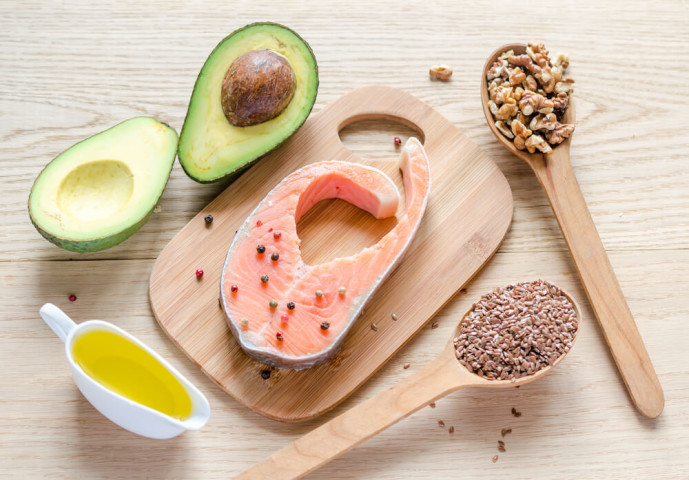Looking for tips on muscle building meal planning? Everyone wants to get fit but here’s what you need for a serious plan of dietary attack.
Everyone has different goals – some people want to lose weight, some want to gain muscles, some want to be somewhere in between both. And obviously, your meal planning is a huge key in deciding whether or not you reach the goals you want.
Improper meal planning has a plethora of downsides, including…
- Not gaining/losing weight as you planned.
- Gaining/losing weight too quickly, which then turns into too much fat stored up or muscle lost.
- Eventually you will get sick and tired of boring foods, which is going to complicate everything in the long run.
- You’re going to be dealing with tons of hunger pangs and cravings.
- It’s going to be tough trying to find a pattern of meal frequency that works for you
- You aren’t using nutrient timing to make the process easier
- So much more..
But following a meal plan doesn’t have to be painful. In fact, it’s within reach – you just have to know how it works and stick to some guiding principles that work for you.
With proper meal planning, building muscle and losing fat on a consistent basis is going to not only be successful but also enjoyable. And, as an added bonus, you’re going to be able to keep this meal planning going, without it growing stale or boring. So instead of this just being another diet on the belt or doing some quick fix, it’s more of a lifestyle change. It’s going to be the end-all to yo-yo dieting and the frustrations that go along with it.
So we’re going to give you the full dish so to speak, packed full of meal planning tips that really work.
Getting Started with Meal Planning
First and foremost, you want to make sure that you calculate your daily calorie intake correctly. This is a critical step because if it’s calculated incorrectly (or not at all) nothing you do is going to work, meaning you aren’t going to lose fat or build up on muscle.
And, because of some really weak advice that’s available everywhere, a lot of people find this part confusing. But we’ve simplified it for you.
If your focus is mostly on getting rid of fat, here’s what you need to do – give your body less energy, in the form of food, than what it burns on a daily basis. This is of course measured in calories and is called caloric deficit.
When you start doing this, your body turns to the fat it has stored up. In fact, going into a calorie deficit is the only sure-fire way to make sure you cut back on your body fat percentage over time. So now we know you’re probably wondering how big of a deficit it needs to be.
Another thing to consider if you’re really focused on fat loss is that intermittent fasting shreds fat, plain and simple.
Here’s the thing – even though weight loss diets are all about cutting back on calories, this isn’t exactly the best thing to do. This can have some seriously negative side effects, like a huge loss in muscle, damage to your metabolism, and even some effects on your mood.
So instead of aiming for a huge calorie deficit, you want to aim for something in the middle.
Ideally, you want to aim for feeding your body with around 20% less calories than what it actually burns on a daily basis. And if you’re able to do this, you can lose between 1 to 2 pounds on a weekly basis, without having to deal with problems with your mental or energy levels.
Meal Planning Based on Energy Expenditure
So, the first thing you need to do is calculate how much energy you’re burning on a daily basis. There are a few different ways you can do this. Some of these methods include tracking your movement and apps. If you want a faster solution, turn toward the Katch McArdle formula, which will help you decide how much energy your body is burning each day (this doesn’t include any physical activity). This amount is known as your BMR (basal metabolic rate). Then, you take that number and follow the below info:
If you exercise 1 to 3 hours during the week, multiply your BMRR by 1.2
If you exercise between 4 to 6 hours a week, multiply your BMR by 1.35
If you exercise over 6 hours each week, multiply your BMR by 1.5
Then the number you come up with is going to be an estimate of your total daily energy expenditure (TDEE), which is how much energy your body burns daily.
In order to get a 20% calorie deficit, you want to multiply your TDEE by .8. Then, by eating 80% of your TDEE, you’re putting yourself into a pretty moderate calorie deficit and this is the key to healthy yet consistent weight loss.
Now a lot of people don’t know this pretty important fact – the total amount of calories you intake during a day has an equally critical hand in building muscle, as just much as fat. So how many calories you eat on a daily basis will have some sort of effect on the way your body is able to build muscle.
Meal Planning Tips for Muscle Growth
Energy balance is important when it comes to driving muscle growth. Allow us to explain – when your body is in what they call a negative energy balance, this means you are feeding your body with less energy than it burns, so you’re going to lose weight. However, the catch here is that it also messes with your body’s ability to synthesize muscle proteins. The body isn’t able to just build muscle when you put yourself in a calorie deficit, so that’s why it’s impossible to lose weight and build muscle at the same time.
So if you want to dedicate your time to building muscle, you have to first understand that you can’t be in a calorie deficit. Rather, you need to put yourself in a small calorie surplus, which in turn is called a positive energy balance.
No matter what type of diet or system you go with, you’ll find this is true. As you might have already guessed, all you need to do in order to get a slight calorie plus is multiply your TDEE by any number bigger than 1. Then you’re going to be “bulking.” There are however, smart ways of bulking when you’re trying to put on muscle without the extra fat. It’s also important to understand the real deal on carbs when it comes to body fat.
At the end of the day, a huge jump in calories isn’t going to help you build muscle a lot faster. Instead, you’re just going to get fatter faster. Obviously, this is going to slow down on your fitness progress. Instead, start with a smaller calorie surplus and adjust as you see first.
Meal Planning Tips: Getting Your Macros
Our next meal planning tip is to make sure you’re calculating your macronutrient ratios correctly. We know there’s a lot of calculations we’ve got going on here but hear us out. The reason behind this is because calories eaten versus calories burned is the whole foundation of weight loss, so you want to know you get those calories.
Macronutrients include protein, carbs, and fat. So the ones we’re focusing on is fat, protein and carbs. When you have 1 gram of protein, and 1 gram of a carb, that’s the same as 4 calories. One gram of fat, however, is the same as 9 calories. These numbers are how you turn your daily calorie target into the macronutrient targets. While there’s a lot of advice and opinion on this matter, we’re going with the facts. And here they are:
A diet that’s high in protein is going to help you maintain muscle even when you’re in a calorie deficit. When you’re in a calorie surplus, this will help you maximize muscle growth.
But you don’t need to eat as much protein as some people tell you you do. And here’s a news flash – carbs are not all going to make you fat! Rather, they can also help you build and preserve muscle.
Meal Planning Tips: The Dish on Carbs
Whether you want to gain weight or lose it, carbs are actually going to help you.
Two main reasons why: First of all, carbs jump start the process of glycogen, which is produced in our liver. And this is a form of energy our body uses. When you weight lift, your body is going to drain itself of any glycogen it had stored up.
When you replenish those now-empty stores, you keep your muscles packed full of glycogen, which is going to help boost your performance and cut down on muscle breakdown post exercise.
The second reason has to do with the hormone, insulin. This is released by our pancreas while we eat, and taxis nutrients around our bodies, from our blood to our cells. When you sit down and have a carb-fest, you’re going to have a longer, steadier release of insulin. While it doesn’t have a direct hand in inducing protein synthesis, it does have a few anti-catabolic properties. By this we mean it’s going to actually cut down on the rate of which protein breaks down, which is going to create an anabolic environment, so muscle is able to grow faster.
Carbs get a bad wrap (excuse the pun), so it’s important to understand that quality whole grain and whole food carbs will not affect your body like starchy glutinous garbage. There are a number of myths so make sure you understand the truth about carbs and muscle growth.
This isn’t just us talking. There’s scientific research done by McMaster University that proves this to be true. To keep a long study short, the subjects that had a lower-carb diet showed more protein breakdown rates over those with a higher carb diet.
It’s a given, but your body needs a specific amount of fat in its diet in order to keep on top of things like insulin sensitivity, hormone production, etc. So your body only needs a set amount of fats in a day. If you exercise on a regular basis, your dietary fat can actually be up to 35% of your BMR calories.
Let’s say you’re eating around 2,500 calories a day, with 30% of that coming from protein, 50% coming from carbs and 20% coming from fat. That’s about 190 grams of protein, with 310 grams of carbs and 55 grams of fat.
However, if you decided to make the switch to 30% of calories coming from protein, 40% coming from carbs, and 30% coming from fat, you’re looking at 190 grams of both protein and carbs, with 110 grams in fat.
You’re going to have a lot more energy if you switch with the higher-carb diet, which will help you out with your workouts and get your building more muscle faster.
Here’s what we recommend:
For Caloric Deficit: put yourself at 40% of your daily calories coming from protein, with the same for carbs and about 20% from just fat. This way, you will get all the benefits of a diet high in protein, but still enough carbs to keep your energy and strength levels high. The fat amount is just right, because you’re getting enough to support your physiological needs.
For Caloric Surplus: Push your protein intake levels up to 1.3 grams of protein per day, and loosen up on the carbs up to 40% of your diet, with the remainder being made up of healthy natural fats.
Conclusion
Of course we couldn’t leave you hanging without talking about what kinds of foods to eat. Remember: it’s often more about how much you eat rather than what. Now we aren’t saying go for junk food. While you can cheat every once in a while, stuck with foods that are full of nutrients, like greens (spinach, kale, chard, etc), Brussel sports, peppers, avocados, mushrooms, berries, yogurt, eggs, sweet/baked potatoes, beans, seeds, nuts, salmon/fish, chicken, lean beef, turkey. There are tons and tons of delicious options to pick from without dealing with chicken and brown rice for every meal of the day. If you need help, we’ve got some ideas for cheap and healthy meals!
As for ideal meal frequency, aim for a feeding every 3 to 4 hours, as this can ward off hunger and keep your metabolism burning. Make sure you keep healthy muscle-building snacks available. If you plan to weight lift, however you will want to try and have 30 grams of proteins/30-50 grams of carbs before and after, so you have a great boost of energy and increase muscle growth.
These pointers are exactly that – pointers. If you feel like you need to tweak things here and there, go for it. Listen to your diet and decide if it’s responding how you want it to.
Terry
Latest posts by Terry (see all)
- How Important Are Net Carbs For Building Huge Muscle? - Apr 28, 2017
- The Matt Damon Workout Explained - Apr 27, 2017
- Watercress – Benefits And The Best Way To Consume It - Apr 26, 2017















[…] Same here my friend but it is one habit that has been shown to lead to weight gain. It is lazy not to and only promotes negativity throughout your day such as eating poorly or slacking off on another simple task. Not convinced yet? Author of The Power of Habit, Charles Duhigg states that reconstructing your bed each day can lead to other constructive habits like making a healthy lunch, getting exercise or planning a healthy dinner. […]
[…] Download Image More @ gymjunkies.com […]